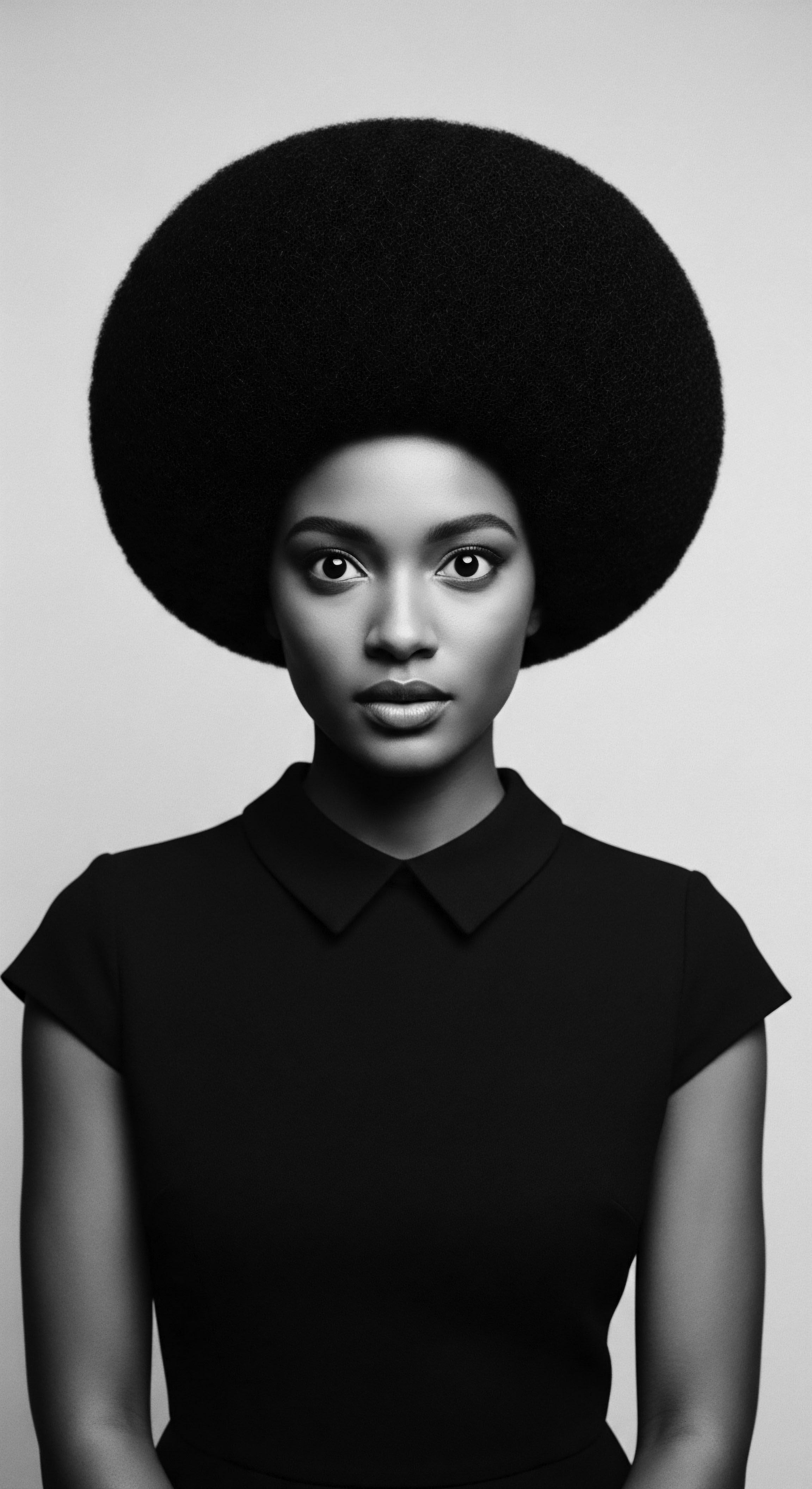
Fundamentals
The concept of Cuticle Protection, at its foundational core, refers to the deliberate safeguarding of the outermost layer of a hair strand. This delicate external sheath, comprised of overlapping, scale-like cells, acts as a guardian, shielding the inner cortex and medulla from environmental aggressors, physical manipulation, and chemical interventions. For textured hair, this inherent shielding role carries an even greater significance, intertwined with the very lineage of hair and its care traditions across generations.
Consider the singular architecture of textured hair, a marvel of natural design. Unlike straight hair, which often possesses a more uniform, cylindrical shape, coils, kinks, and curls exhibit an elliptical or flattened cross-section, accompanied by frequent twists and turns along the strand’s length. This distinctive morphology means the cuticle scales do not lie as flat or as uniformly as they might on straighter strands. Instead, these scales are more prone to lifting, exposing the hair’s internal structure to potential harm.
This structural reality renders textured hair inherently more susceptible to moisture loss, tangling, and breakage, underscoring the vital necessity of robust cuticle protection. From the earliest moments of communal hair understanding, a profound recognition of this vulnerability guided ancestral hands in developing practices that honored the hair’s innate fragility.
Long before the advent of microscopes or the language of molecular biology, ancient communities possessed an intuitive grasp of hair’s integrity. Their observations, honed through centuries of intimate interaction with the natural world, revealed that hair, when treated with reverence and natural emollients, retained its vibrancy and strength. They understood that certain applications, whether derived from indigenous flora or animal fats, offered a visible sheen and a resilient feel, qualities now recognized as indicators of a well-preserved cuticle. These ancestral insights, passed down through oral traditions and communal rituals, laid the groundwork for what we now scientifically categorize as cuticle protection.

The Hair’s Outer Garment ❉ An Initial Understanding
The cuticle, the hair’s outermost layer, forms a protective barrier, much like the shingles on a roof. These keratinized cells overlap, pointing towards the hair’s end, and their primary function is to regulate the entry and exit of moisture while providing a smooth surface that reflects light, bestowing a natural sheen. When these scales lie flat, the hair appears healthy, feels smooth, and resists external damage.
Conversely, when the cuticle is compromised—whether through harsh cleansing, excessive heat, or environmental exposure—these scales lift, creating a rough surface that snags, loses moisture rapidly, and appears dull. This elemental understanding of the cuticle’s role is a cornerstone of effective hair care, particularly for hair types that naturally possess a more open cuticle structure.
For individuals with textured hair, the spiraling patterns of their strands mean that certain sections of the cuticle are perpetually exposed at the curves and bends. These points become areas of heightened vulnerability, making moisture retention a continuous, delicate dance. Traditional care practices, often born from necessity and a deep connection to the earth’s offerings, sought to mitigate this inherent challenge, creating a legacy of protective measures that speak to an enduring wisdom.
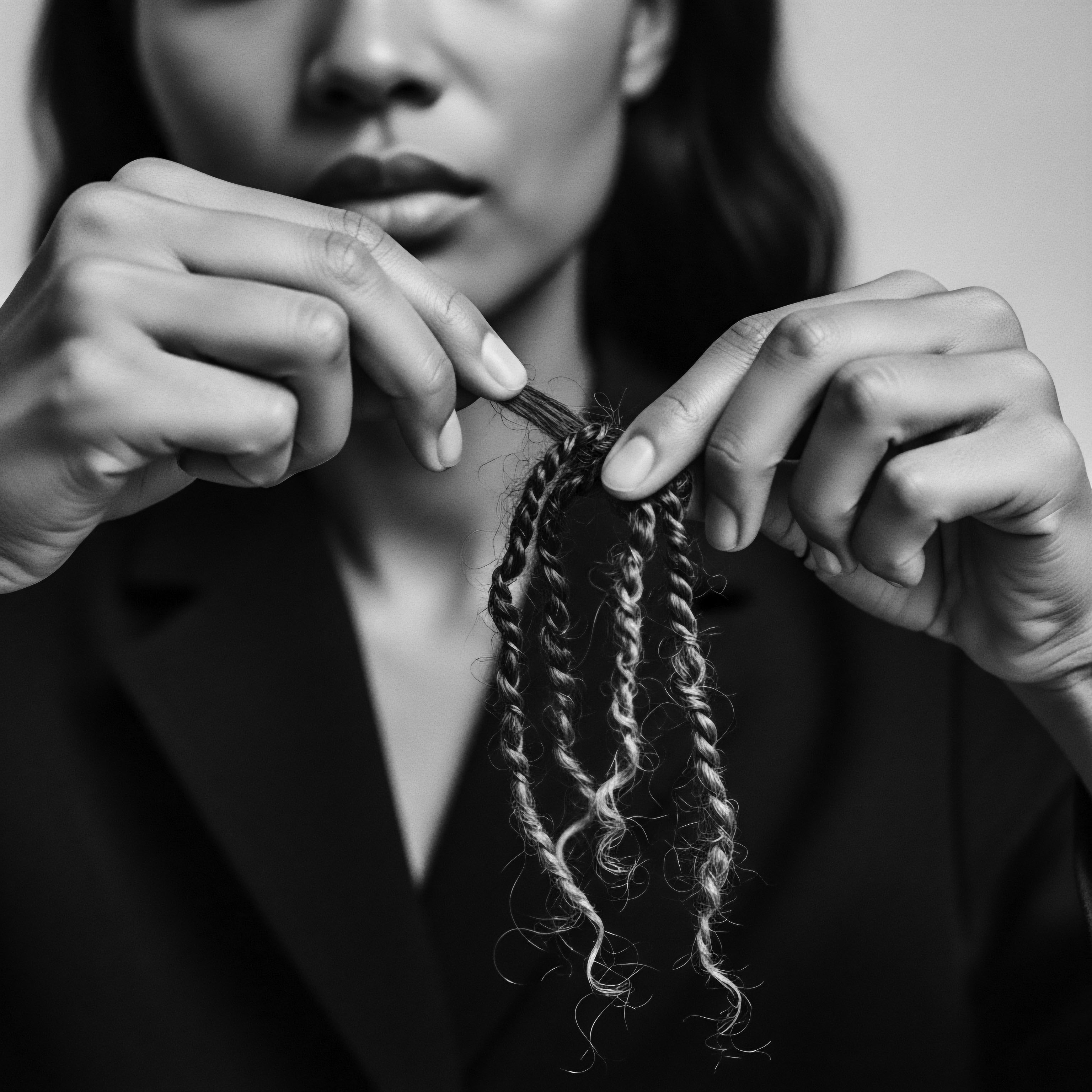
Ancestral Wisdom in Hair’s Early Care
The wisdom of early hair care, particularly within communities that cultivated diverse textured hair forms, was deeply empirical. Generations observed how certain natural substances interacted with hair, noting the profound differences in its malleability, sheen, and strength. They perceived hair not merely as an adornment but as a living extension of self, a repository of identity, and a conduit to ancestral realms. This holistic perspective informed every aspect of care, from cleansing to styling, intuitively guiding them toward practices that, unbeknownst to them, preserved the cuticle.
- Botanical Butters ❉ Shea butter, sourced from the revered Karite tree, offered deep moisture and a protective seal, intuitively smoothing cuticle scales.
- Indigenous Oils ❉ Palm kernel oil and coconut oil, widely used across West Africa, provided a lipid layer that reduced moisture evaporation, guarding the hair’s inner core.
- Natural Clays ❉ Rhassoul clay, employed in various African traditions, cleansed the hair without stripping essential oils, thereby maintaining the cuticle’s delicate balance.
These early interventions, born from a deep connection to the earth’s bounty, represent the earliest manifestations of cuticle protection, a practice rooted in the observation of hair’s inherent needs.
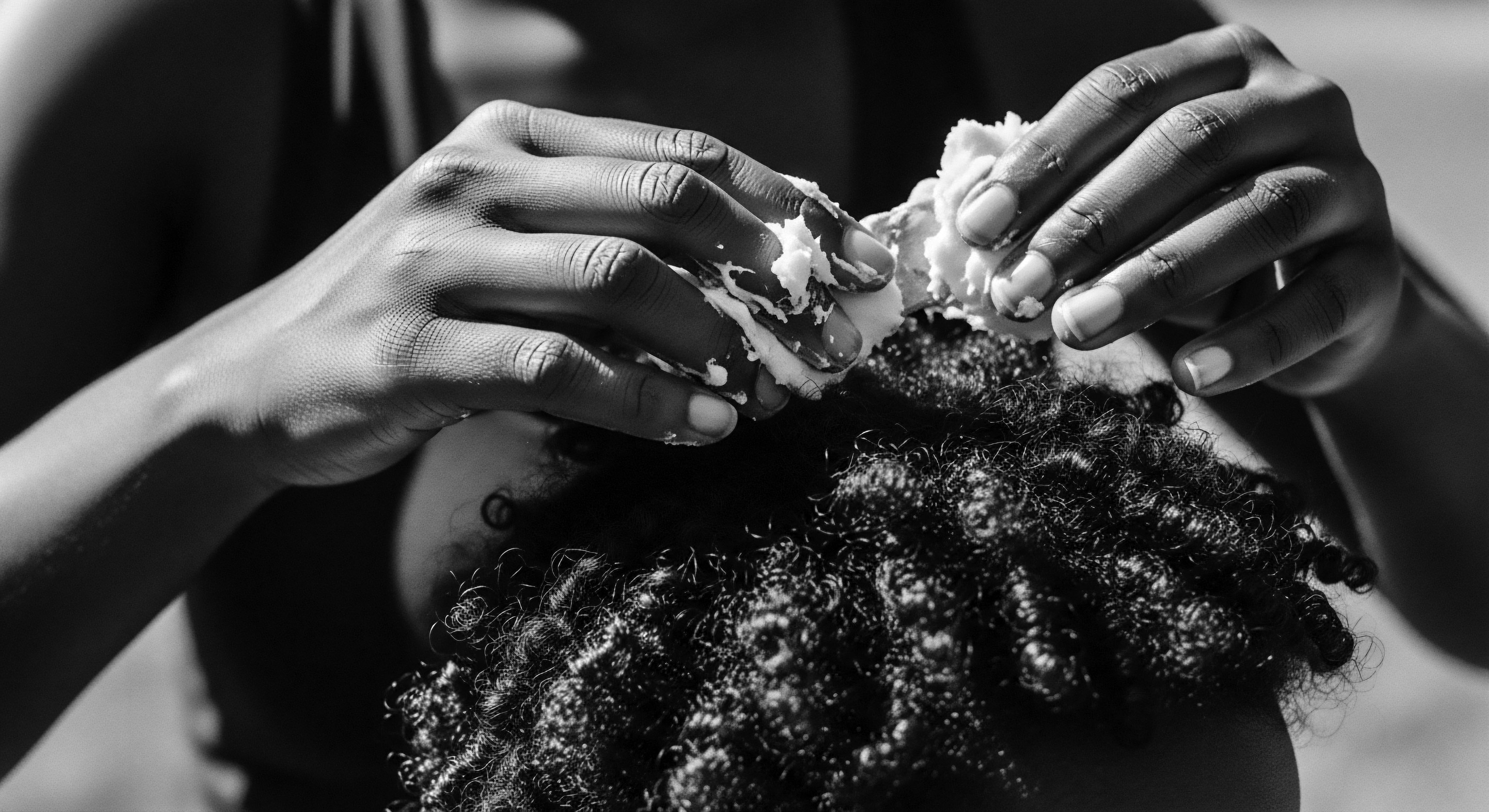
Intermediate
Advancing our contemplation of Cuticle Protection requires a deeper look into the intricate structure of the hair strand and the historical confluence of practices that have either honored or compromised its integrity. The hair cuticle, a complex arrangement of six to ten layers of dead, overlapping keratinocytes, plays a far more dynamic role than simple shielding. Each individual cuticle cell, a flat, thin, and elongated structure, is anchored to the underlying cortical cells and to each other by a protein-rich intercellular cement and a protective lipid layer known as the F-layer or 18-Methyleicosanoic Acid (18-MEA).
This external lipid layer is particularly vital for maintaining the hair’s hydrophobicity, or its natural resistance to water, a quality that directly influences how quickly hair absorbs and loses moisture. When this delicate 18-MEA layer is intact, the cuticle scales lie flat, contributing to the hair’s natural sheen, softness, and its capacity to resist environmental stressors.
For textured hair, the inherent twists and turns of the fiber create natural points of weakness where the cuticle layers are more prone to lifting and chipping. This structural reality means that the hair’s natural oils, sebum, struggle to travel down the spiraling strand, leading to chronic dryness, a condition that further compromises cuticle health. It is this foundational understanding of textured hair’s unique physiological demands that underscores the enduring wisdom of ancestral practices.
Without the benefit of electron microscopes, communities across the African diaspora intuitively understood the need for constant moisture, lubrication, and gentle handling to maintain hair’s vitality. Their methods, often ritualistic and communal, were, in essence, sophisticated forms of cuticle preservation.
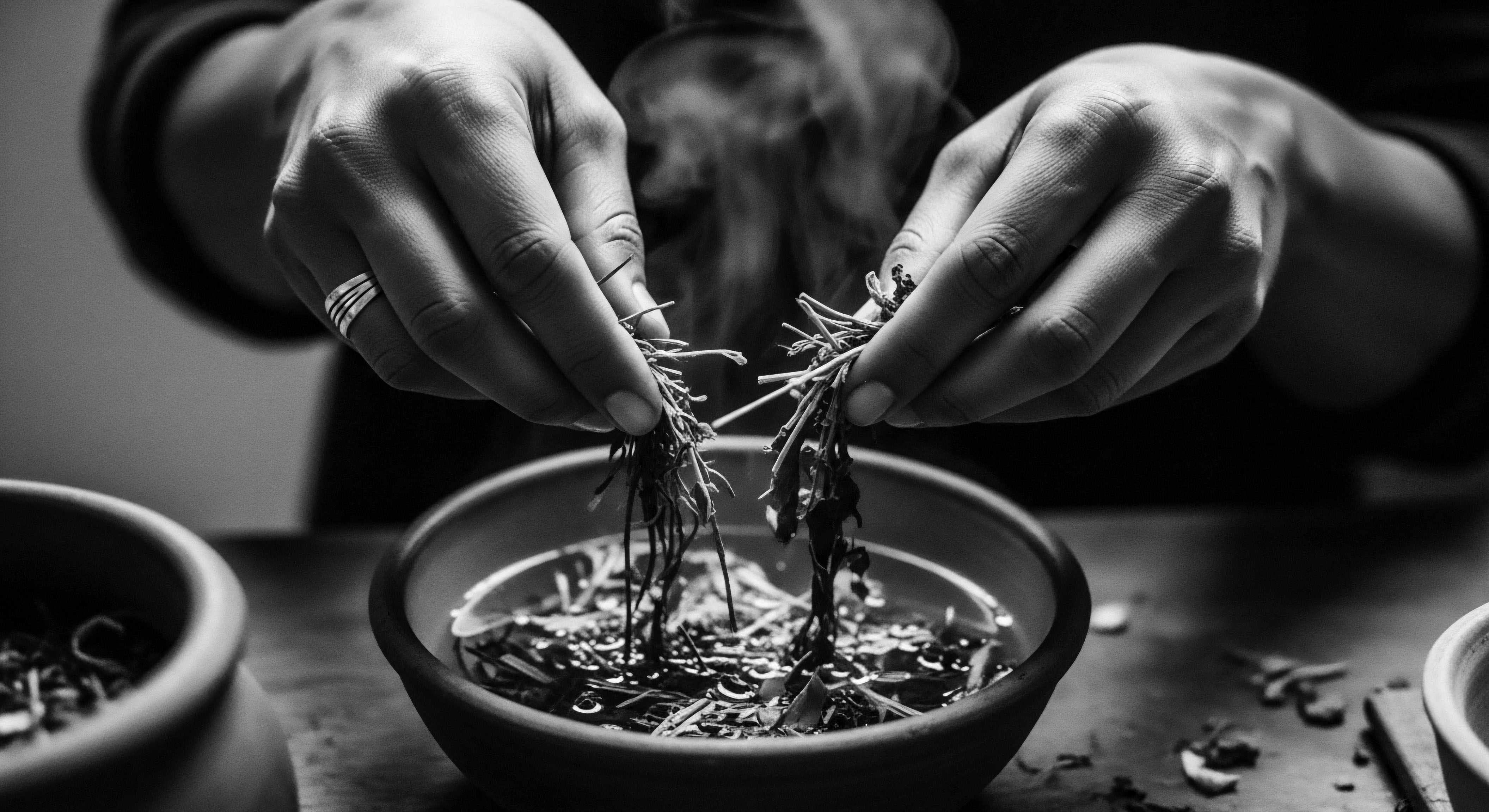
Ancestral Ingenuity and the Cuticle’s Resilience
Ancestral communities developed ingenious methods that, from a modern scientific perspective, directly contributed to cuticle protection. Practices like regular oiling and buttering, using substances such as shea butter, palm kernel oil, and coconut oil, served to replenish the hair’s external lipid layer, mimicking the protective function of 18-MEA. These emollients created a hydrophobic barrier, reducing hygral fatigue—the repeated swelling and shrinking of the hair shaft as it absorbs and releases water, which can lift and damage the cuticle scales.
Furthermore, the prevalence of protective styling, including intricate braiding, twisting, and threading, minimized daily manipulation and exposure to harsh elements, effectively safeguarding the delicate cuticle. These styles not only served aesthetic and social functions but also acted as physical shields, allowing the hair to retain its length and inherent strength.
Ancestral practices for textured hair care, deeply rooted in the earth’s bounty, intuitively mirrored modern scientific principles of cuticle protection by creating external lipid barriers and minimizing physical stress.
The deep respect for hair as a living entity, passed down through maternal lines, meant that care rituals were often slow, deliberate, and gentle. Detangling was performed with patience, often with the aid of natural oils or water, preventing the forceful tearing of cuticle layers. Cleansing agents, such as African Black Soap, crafted from plantain skins and cocoa pods, provided a milder alternative to harsh lye-based soaps, cleansing the scalp and hair without stripping away vital lipids that maintain cuticle integrity. This harmonious relationship between cultural practice and hair physiology speaks to a profound ecological understanding that transcends mere beauty.
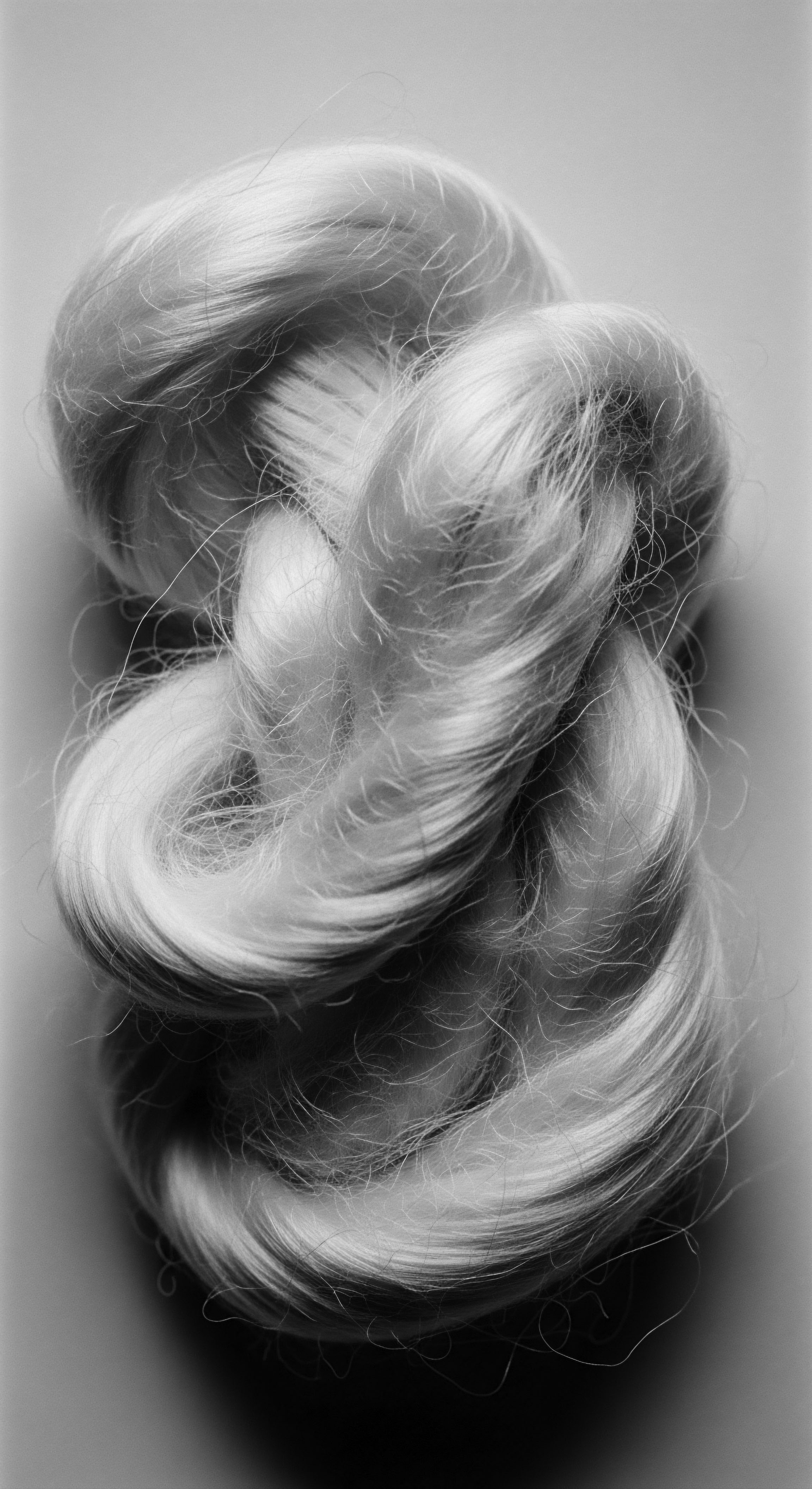
The Unraveling ❉ Colonialism, Assimilation, and Cuticle Compromise
The profound reverence for textured hair and its protective care traditions faced immense challenges with the advent of colonialism and the transatlantic slave trade. Hair, once a symbol of identity, status, and spiritual connection, became a tool of dehumanization. The forced shaving of heads upon arrival in the Americas stripped enslaved Africans of their cultural markers, initiating a long and painful journey of hair trauma.
As generations endured the brutal realities of enslavement, traditional hair care practices, and access to indigenous ingredients were severely disrupted. The subsequent pressure to conform to Eurocentric beauty standards led to the widespread adoption of damaging practices, particularly chemical hair straightening, known as “relaxing.”
These chemical relaxers, typically containing strong alkaline agents like sodium hydroxide (“lye”) or calcium hydroxide (“no-lye”), function by breaking the disulfide bonds within the hair’s keratin structure, permanently altering its natural curl pattern. While achieving a straightened appearance, this process comes at a significant cost to cuticle health. The high pH of relaxers causes the cuticle to swell and lift aggressively, making it highly vulnerable to irreversible damage. The repeated application of these harsh chemicals, often beginning in childhood, led to chronic cuticle damage, protein loss, and severe breakage, contributing to various forms of alopecia.
A sobering statistic underscores this historical impact ❉ a study found that 90% of African-American women experiencing hair breakage reported using chemical treatments (Rosado, 2007). This stark correlation highlights the profound compromise to cuticle integrity and overall hair health brought about by beauty standards that prioritized straightness over the inherent vitality of textured hair. The struggle for cuticle protection thus became, for many, a silent battle against imposed norms, a legacy that continues to inform contemporary hair journeys.
The Liquid, Oil, Cream (LOC) or Liquid, Cream, Oil (LCO) methods, widely adopted in contemporary textured hair care, represent a modern echo of ancestral wisdom. These techniques layer moisture and emollients to seal the cuticle, directly addressing the dryness inherent to many textured hair types. This approach, which intuitively aligns with the goal of cuticle protection, allows for sustained hydration and minimized manipulation, fostering an environment where textured hair can thrive, echoing the protective intentions of forebears.

Academic
The academic delineation of Cuticle Protection extends beyond a mere mechanistic explanation, encompassing a profound interdisciplinary examination of its biological, cultural, and historical underpinnings, particularly within the context of textured hair. At its most precise, Cuticle Protection refers to the strategic and sustained preservation of the hair’s outermost cellular layer, the cuticle, a critical component of the hair fiber’s structural integrity and aesthetic presentation. This involves mitigating exogenous and endogenous stressors that lead to the lifting, erosion, or removal of the cuticle scales, thereby preventing irreversible damage to the underlying cortical cells and preserving the hair’s mechanical strength, elasticity, and hydrophobicity. For hair with coiled, kinky, or curly morphologies, this protective imperative is amplified by the inherent architectural predispositions to cuticle vulnerability, making a deep understanding of its meaning paramount for both scientific inquiry and culturally resonant care practices.
The scientific understanding of the cuticle as a multi-layered, imbricated structure, cemented by a unique lipid layer (18-Methyleicosanoic Acid, or 18-MEA) and proteinaceous bonds, provides a framework for appreciating the efficacy of ancestral practices. The integrity of this lipid layer is fundamental to the hair’s natural luster and its resistance to water absorption, which, when compromised, leads to increased porosity, frizz, and brittleness. Textured hair, with its irregular cross-sectional shape and numerous points of curvature, experiences differential stress distribution along the fiber, leading to localized cuticle lifting and greater exposure of the cortex. This biological reality necessitated the development of sophisticated, albeit empirically derived, protective strategies within African and Afro-diasporic communities.
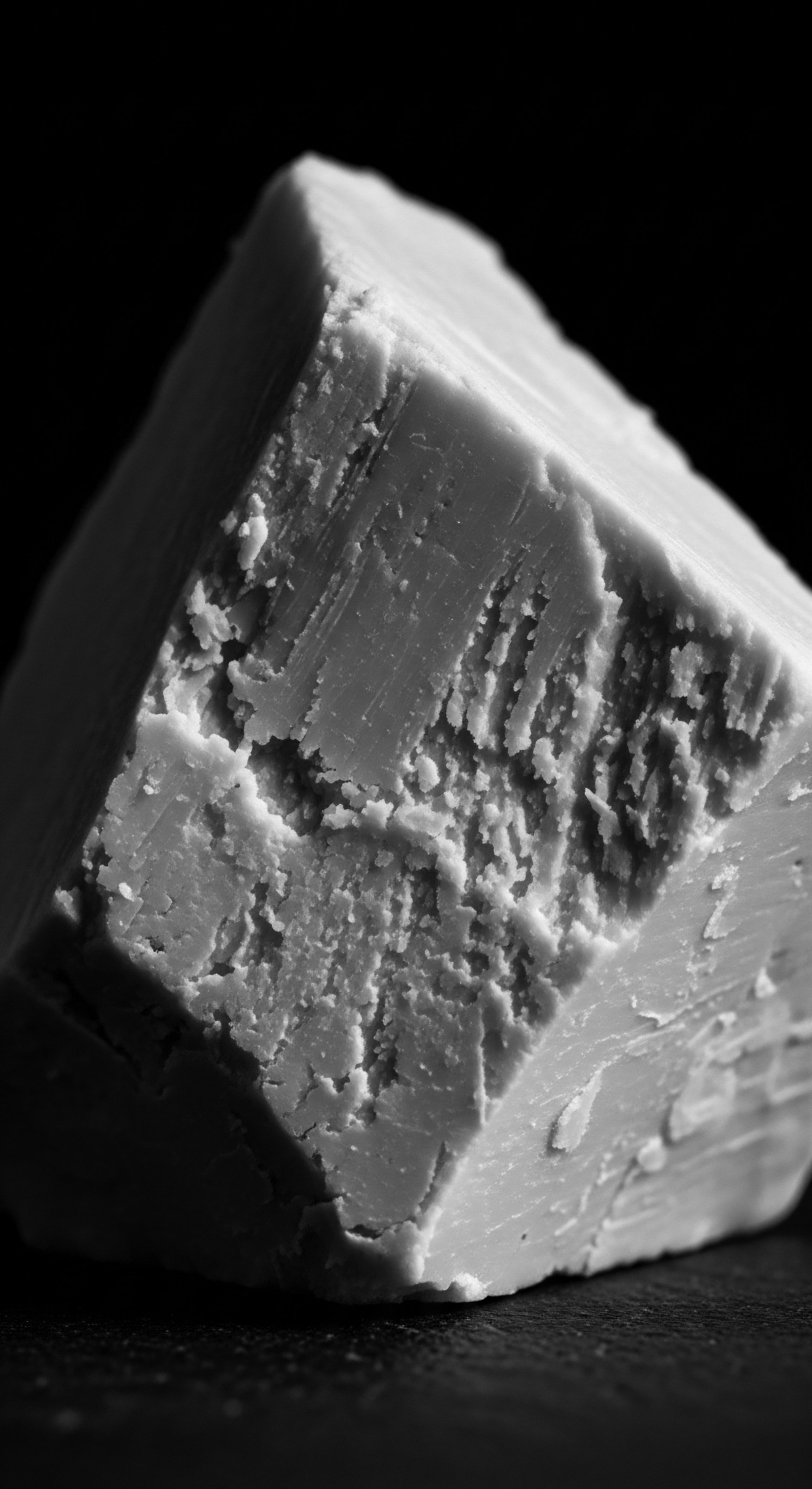
Echoes from the Source ❉ Ancestral Knowledge as a Foundation for Cuticle Preservation
The profound knowledge of hair care traditions across African communities, passed down through generations, often predates and, in many instances, anticipates modern scientific findings regarding cuticle protection. These practices were not merely cosmetic; they were deeply integrated into social rituals, spiritual beliefs, and communal identity. The systematic application of natural butters and oils, for instance, served as a foundational element of care. Shea butter, derived from the Vitellaria paradoxa tree, and palm kernel oil, extracted from the fruit of the African oil palm, were consistently applied to hair to seal in moisture and provide a protective barrier.
This practice directly correlates with the scientific principle of occlusive moisturization, where a lipid layer minimizes transepidermal water loss, thus keeping the cuticle scales pliable and less prone to fracture. The rich fatty acid profiles of these traditional emollients, including oleic and stearic acids, allow for their absorption into the hair’s surface, contributing to a smoothed cuticle and enhanced elasticity.
Traditional African hair care, with its reliance on natural emollients and protective styles, offers a compelling historical blueprint for effective cuticle preservation.
Consider the meticulous care of hair within the Basara/Baggara Arab tribe of Chad, a specific historical example that powerfully illuminates the deep connection between ancestral practices and cuticle protection. These women are renowned for their practice of using Chébé Powder, derived from the seeds of the Croton zambesicus plant. The powder is traditionally mixed with oils and applied to the hair, which is then braided. This ritual is not primarily for hair growth but for length retention, a direct consequence of minimizing breakage.
The Chébé powder, when combined with moisturizing substances, is believed to fill hair shaft spaces and effectively seal the cuticle, creating a protective sheath that reduces friction and environmental damage (Ancient Gems, 2024). This deliberate, multi-step process—application of powder and oil, followed by protective braiding—demonstrates an ancestral understanding of sealing the cuticle to maintain hair integrity, a practice that has sustained hair health for centuries in challenging climates. This ritualistic approach stands as a testament to the sophisticated, empirically derived methods that safeguarded hair’s outermost layer long before scientific nomenclature existed.
The use of Protective Styles, such as intricate braiding and threading (known as “Irun Kiko” among the Yoruba people of Nigeria), served a dual purpose ❉ aesthetic expression and physical safeguarding of the hair shaft. These styles reduced daily manipulation, minimized exposure to harsh sun and dust, and prevented tangling, all factors that contribute to cuticle wear and tear. The careful sectioning and binding of hair strands in these styles mechanically protected the cuticle, allowing for length retention and reducing the need for aggressive detangling, which can severely abrade the cuticle.
- Shea Butter Application ❉ Historically used as a sealant and moisturizer, directly addressing the lipid needs of the cuticle.
- Oiling Rituals ❉ Regular infusions of natural oils to maintain pliability and create a hydrophobic barrier on the hair surface.
- Protective Styling ❉ Braids, twists, and threading that minimized physical manipulation and environmental exposure, shielding the cuticle.
- Gentle Cleansing Agents ❉ Utilization of natural soaps and clays that cleansed without stripping the hair’s natural oils, preserving the cuticle’s delicate structure.
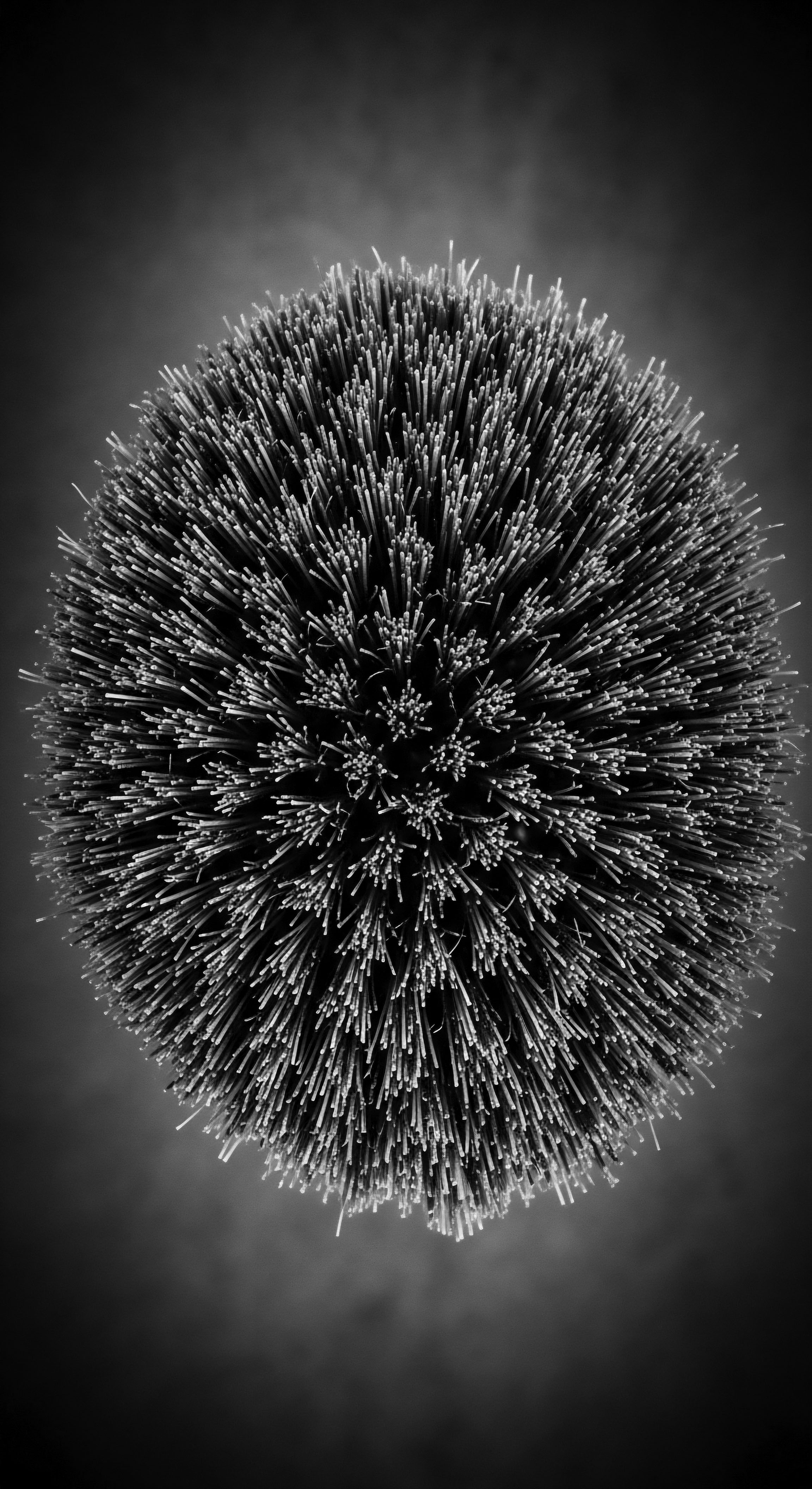
The Unbound Helix ❉ Identity, Resilience, and the Future of Care
The journey of cuticle protection within textured hair experiences is inextricably linked to the broader socio-political landscape of identity and resilience. The transatlantic slave trade and subsequent periods of racial subjugation systematically sought to dismantle the cultural significance of Black hair. The forced adoption of Eurocentric beauty standards, which often equated straight hair with desirability and professionalism, led to a pervasive internal struggle. This cultural violence manifested in the widespread use of chemical relaxers, a practice that, while offering a semblance of conformity, wrought extensive damage to the hair’s cuticle and overall health.
The detrimental impact of chemical relaxers on cuticle integrity is well-documented. These formulations, designed to permanently alter the hair’s disulfide bonds, cause significant swelling and lifting of the cuticle scales, leaving the hair porous, brittle, and highly susceptible to breakage. A significant finding from a review of hair care practices in Black women highlights this ❉ a study reported that 90% of African-American women experiencing hair breakage also reported using chemical treatments (Gathers & Alexis, 2014).
This statistic underscores the profound compromise to cuticle health and the long-term consequences of chemically altering textured hair, often driven by societal pressures rather than intrinsic hair health needs. The repeated chemical insult weakens the hair’s natural defenses, leading to chronic dryness, reduced elasticity, and a diminished capacity to retain moisture, all direct consequences of a severely compromised cuticle.
| Historical Era/Context Pre-Colonial African Traditions |
| Primary Approach to Hair Care Use of natural butters, oils, and protective styles (e.g. shea butter, palm kernel oil, braids, threading). |
| Impact on Cuticle Protection High level of inherent cuticle protection through natural lipid barriers and minimal manipulation. Hair health prioritized. |
| Historical Era/Context Post-Slavery/Assimilation Period |
| Primary Approach to Hair Care Emergence of chemical relaxers and hot combs to achieve straightened textures. |
| Impact on Cuticle Protection Severe cuticle damage, lifting, and breakage due to harsh chemicals and excessive heat. Health compromised for conformity. |
| Historical Era/Context Modern Natural Hair Movement |
| Primary Approach to Hair Care Reclamation of natural textures, focus on moisture, gentle cleansing, and low-manipulation styles (e.g. LOC/LCO method, co-washing, curl definition). |
| Impact on Cuticle Protection Renewed emphasis on cuticle integrity through hydration, gentle care, and protective styling, aligning with ancestral wisdom. |
| Historical Era/Context The journey reveals a cyclical return to ancestral principles for robust cuticle health, recognizing hair's intrinsic value. |
The contemporary natural hair movement represents a powerful reclamation of ancestral wisdom and a conscious pivot towards robust cuticle protection. This movement champions the inherent beauty and strength of textured hair in its natural state, rejecting the historical imperative for chemical alteration. Central to this movement is a deep appreciation for practices that nurture the cuticle, such as:
- Moisture Retention Strategies ❉ The widespread adoption of methods like the Liquid, Oil, Cream (LOC) or Liquid, Cream, Oil (LCO) layering techniques, which systematically hydrate the hair and then seal the moisture with emollients, directly supports cuticle integrity by keeping the scales smooth and flat.
- Gentle Cleansing ❉ A move away from harsh sulfate-laden shampoos towards co-washing (conditioner-only washing) or sulfate-free cleansers, which preserve the hair’s natural oils and the cuticle’s delicate lipid layer.
- Low Manipulation Styling ❉ A return to protective styles, including braids, twists, and buns, that minimize daily handling and environmental exposure, thereby reducing physical abrasion to the cuticle.
- Mindful Detangling ❉ Emphasis on detangling with ample conditioner and wide-tooth combs or fingers, reducing the force that can tear and lift cuticle scales.
This renewed focus on cuticle protection is not merely a trend; it is a profound cultural statement, a visible manifestation of self-acceptance and a connection to a heritage of resilience. It is a recognition that true hair health, and by extension, holistic well-being, begins with honoring the hair’s natural architecture and supporting its protective mechanisms. The meaning of cuticle protection, in this context, becomes a symbol of liberation, a testament to the enduring power of ancestral knowledge, and a blueprint for cultivating a future where textured hair is celebrated in all its diverse, unadulterated glory. The pursuit of cuticle health, therefore, is not just a scientific endeavor but a deeply personal and collective act of cultural affirmation.
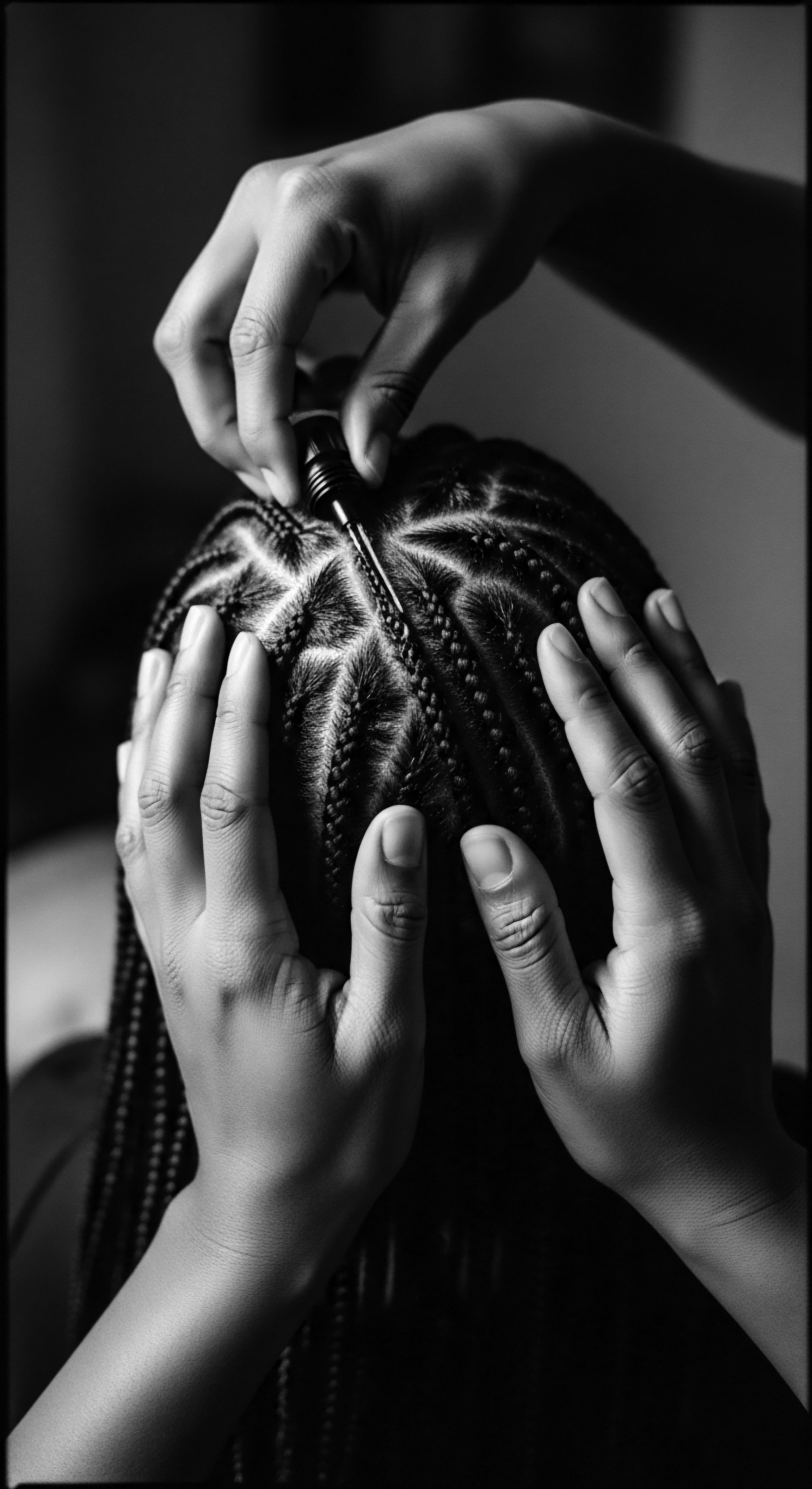
Reflection on the Heritage of Cuticle Protection
The contemplation of Cuticle Protection within Roothea’s living library unveils more than a scientific explanation; it reveals a profound meditation on the enduring soul of a strand. This exploration has traced a continuous thread from the elemental biology of hair to the intricate cultural narratives woven around textured tresses. We have witnessed how ancestral communities, with an innate understanding of their hair’s unique design, developed practices that, in essence, were sophisticated forms of cuticle preservation. These rituals, born from a deep connection to the earth’s offerings and passed through the hands of generations, served not only to maintain hair health but also to uphold identity, community, and spiritual connection.
The historical journey of textured hair, marked by periods of profound challenge and resilient reclamation, underscores the enduring significance of cuticle protection. From the intuitive application of rich butters and oils in ancient African lands to the painful compromises forced by colonial beauty standards, and finally, to the vibrant resurgence of natural hair movements, the story of the cuticle is a microcosm of a larger narrative of cultural survival and self-determination. Each coiled strand carries the echoes of this heritage, a testament to the wisdom that recognized hair not as something to be tamed or altered, but as a sacred extension of self, deserving of gentle, informed care.
As we continue to unravel the complexities of hair science, we find ourselves continuously circling back to the foundational truths held by our forebears. The contemporary emphasis on moisture retention, gentle handling, and protective styling is not a novel invention but a resonant echo of practices that have sustained textured hair for centuries. This ongoing dialogue between ancient wisdom and modern discovery invites us to approach hair care with a reverence that transcends superficial concerns, fostering a deeper connection to our personal and collective heritage. The protection of the cuticle, therefore, is not merely a technical act; it is an act of honoring lineage, a celebration of resilience, and a profound declaration of the unbound beauty that resides within every unique helix.
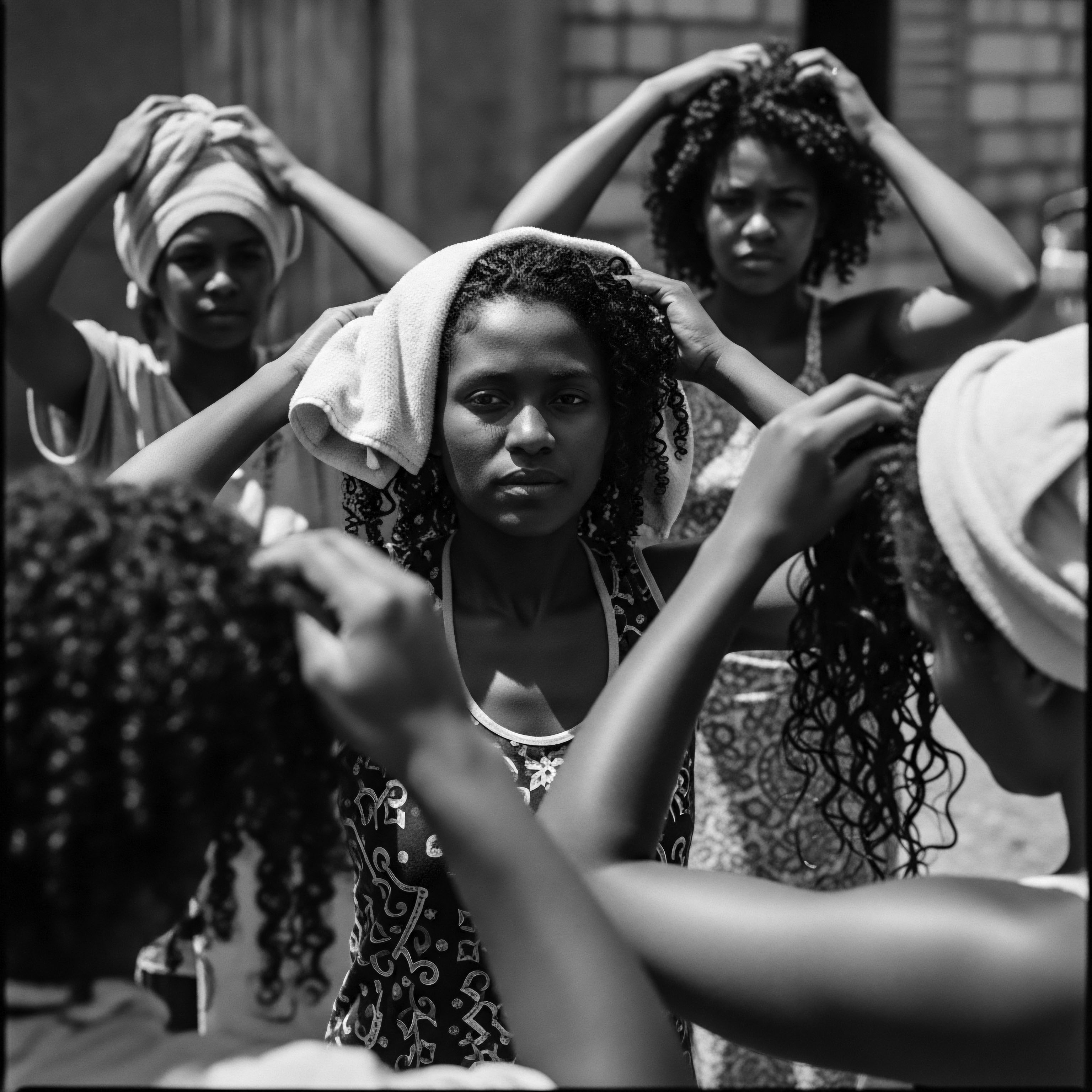
References
- Gathers, M. A. & Alexis, A. F. (2014). Historical Perspectives on Hair Care and Common Styling Practices in Black Women. Journal of Clinical and Aesthetic Dermatology, 7(2), 34–38.
- Nyela, O. (2021). Braided Archives ❉ Black hair as a site of diasporic transindividuation. York University.
- Rosado, S. D. (2007). Nappy hair in the diaspora ❉ Exploring the cultural politics of hair among women of African descent. University of Florida.
- Etemesi, B. A. (2007). Adverse effects of hair relaxers in Kenyan women. Journal of the Pan African Dermatology Association, 12(1), 16-19.
- Khumalo, N. P. Gathers, M. A. & Anolik, R. (2014). Central centrifugal cicatricial alopecia ❉ A clinical and histologic review. Journal of the American Academy of Dermatology, 70(6), 1121-1129.
- P. A. (2024). Ancient Gems ❉ A Historical Survey of African Beauty Techniques. The Africa Report.
- Rucker, S. K. et al. (2011). Hair care practices and associated dermatologic conditions in African American women. Journal of the American Academy of Dermatology, 65(6), 1149-1155.
- Shetty, V. et al. (2013). Effects of chemical straighteners on the hair shaft and scalp. Journal of Clinical and Aesthetic Dermatology, 6(11), 32-38.
- Swee, W. et al. (2000). Hair breakage and loss from a Brazilian brand of hair straightener. International Journal of Dermatology, 39(12), 903-907.
- Sylla, M. & Diallo, A. (2019). Traditional Beauty Secrets of Sub-Saharan Africa. Journal of Ethnopharmacology, 230, 204-210.
